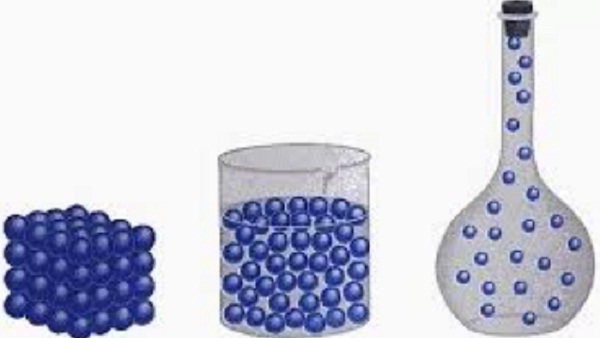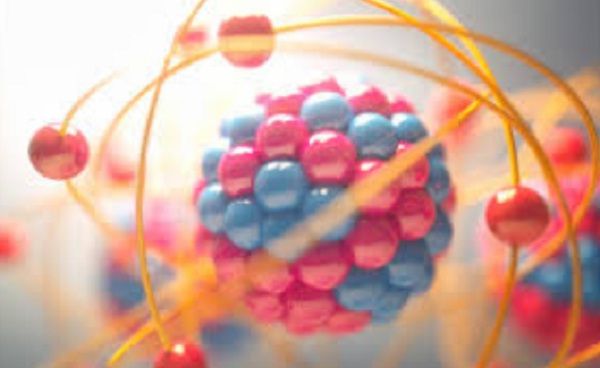The physical properties of matter are important for the research or study of materials. Since it provides useful information for manipulation for the identification of the material.
What are physical properties?
They are based on the structure of the object, substance or matter, which can be visualized and measured. This measurement is carried out by observing and measuring them. In such a general way they are visible characteristics, typical of a substance and do not produce new substances. Define the state of a physical system.
They are called observables. They determine the way an object or matter behaves during a reaction. In chemistry are characteristics of matter that its composition is not altered. It is measured in an experimental experience and does not generate reaction, modification in the molecular structure. In physics, they are characteristics or qualities expressed by theories, laws.
Likewise
It represents a magnitude referring to concrete objects. When interacting with other objects, substances, it makes it possible to predict their behavior. Describe their properties or get new particles. The classification of both physical and chemical properties are extensive and intensive. The intensives, or characteristics, depend on the nature of the material and can be identified.
The amount of matter does not vary and they are constant. While the extensive or non-characteristic, do not depend on the nature of the material and can not be differentiated from another. It is based on the amount of intervening matter. The states of matter are closely related to the properties of matter.


What are the physical properties?
Physical properties can be classified into two: The measurable, quantitative and non-measurable and qualitative.
The measurable and quantitative:
The melting point, is related to the solid state of a material, consists of heating the material. Increasing its temperature up to which begins to melt, passing into the liquid state. It happens that the ordering of the solid structure gives way to achieve a disordered state. Temperature is constant until the solid melts fully. Characteristic of a pure substance. Atmospheric pressure it affects these properties. The boiling point refers to a material in the liquid state, consists of heating by increasing the temperature it even produces a bubbling (boils).
It passes into the gaseous state so that it can evaporate quickly. The temperature remains constant and depends on atmospheric pressure. The density, the mass–volume ratio of a material, consists of the ratio of the volume with respect to the amount of mass. The greater the amount of matter contained, the higher the density. This ratio is a constant value for each substance at equal pressure and temperature. Solubility, a concept that is related to the solute and the solvent. The amount of solute that dissolves in a certain amount of water. At a given temperature.
The non-measurable and qualitative ones.
The smell, is the emanation of certain perceived substances by smell. It is the inhalation carried out by the nose, produced by plants, substances, vehicles, the body. The taste, is a quality belonging to a organ of the human body, animal called the mouth. Which is perceived by intermediate of taste. Is the taste of solid, liquid, or gaseous. When we chew and ingest them. The sensation produced by a substance, perceived by taste. The color, from the term coloring of the state of a colored body.
The appearance of a thing or object, substance. It may be seen, measured and depends on the observer. It is the impression produced on the eyes by light, diffused by objects or substances.


Examples of physical properties
Physical properties can be observed and also measured. For example, a game dice when you look at it you see its characteristics, the what are they: Can be wooden, plastic, heavy, light, square shaped, be of uniform or different colors, it is solid. You can measure the sides by taking take into account the height, width, depth, It can also be weighed to know its mass and determine its density. This example is integrated to both divisions of the properties of matter.
The density, of air 0.0012 g/cm3, water: 1 g/cm3, iron: 7.9 g/cm3, gold: 19.3 g/cm3). Example of smell, the fragrance of a perfume, the emitted by a flower or from the leaf of a plant. The perception of the aroma of a fruit such as cambur, orange. In the same way the emanation of the smell of the sweet milky, when baking a cake, the aroma of a disinfectant favorite. The unpleasantness of decomposed food, the smoke emitted by a vehicle, burning garbage.
The taste, when the food has been high in salt, the juice of an orange that is very acidic, the lemon juice saved for the next day becomes bitter. The mechada meat sauce is spicy, I love the spicy so I add it to the food. The color is observed and measured but everyone perceives it as an interpretation of the reflection of a body that bounces the light. Green, malachite, emerald, gray (silver). Blue, azurine, lapis lazuli, sapphire. Red, ruby, hematite and copper.
Exercises of physical properties
1.- What is the volume of water that a
vessel measuring 30 cm long, 30 Cm wide or a height of 25 Cm?
Data: Height =25CM, length = 30Cm, width = 30cm.
Formula: Vrectangle = height X width X length then
Vrectangulo = 25 Cm X 30 Cm X 30 Cm. Vrectangulo = 22500 Cm 3.
2.- A piece of marble weighs 6 gr and is immersed in a cylinder
graduated containing 25 ml of water. If the new volume is 35 ml, which
will it be the volume of the marble?
Data: Initial = 25 ml, Final = 35 ml.
Formula: V = Final - Initial, substituting V= 35 ml – 25 ml, V= 10 ml.
3.- The mass-volume ratio for calcium is 1.54 gr/ml. What will be the mass of 8
ml of calcium?
Data: D = 1.54 gr/ml, V = 8 ml, m =?
Formula: D = m/v clearing we have to D x v = m
Substituting m = 1.54 gr/ml x 8 ml, m =12.32 gr.
The physical properties of matter are necessary to identify the materials that make up the world around us, we will review them in your environment and practice with them, if you need help check this article.

